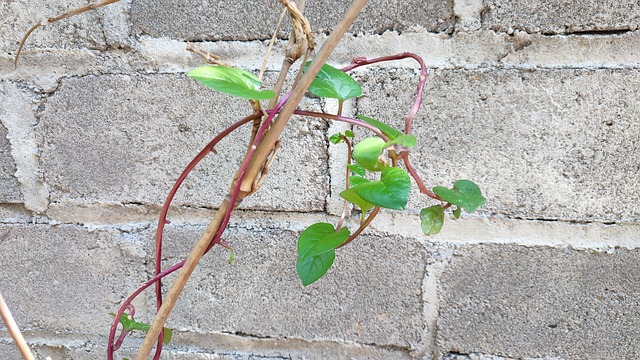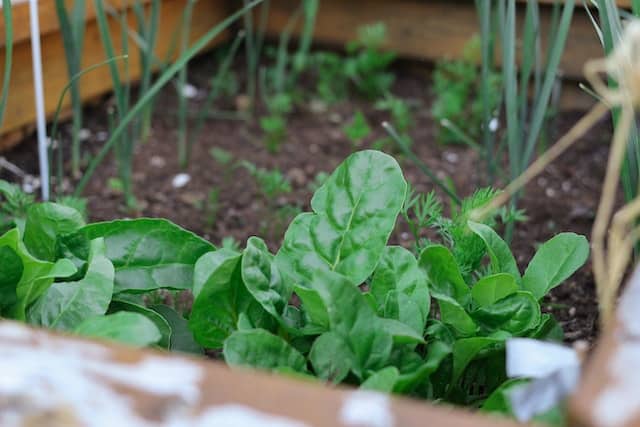Introduction – Spinach And Spring
Picking interesting vegetables for your sustainable, low carbon garden farm means looking for and finding unusual things to plant. Malabar spinach is a tropical climbing spinach that has been cultivated in India and Southeast Asia for centuries. It is a popular leafy vegetable in these regions, and its popularity is slowly spreading to other parts of the world. Malabar spinach is a fast-growing, heat-loving plant that can be grown as a summer annual in most climates. It thrives in full sun and prefers well-drained, moist soil. This leafy green has a slightly bitter taste and is usually cooked before being eaten. It is often used as a spinach substitute in recipes.

The plant is associated with spring, vitality, and fertility. Spinach is a nutritious vegetable rich in vitamins, minerals, and phytochemicals. It is associated with spring and the rebirth of life after winter. This healthy vegetable is also believed to help increase men’s and women’s fertility. Malabar spinach is a type of spinach that can be grown in warm climates. It is sometimes called climbing spinach and grows well on fences, trellises, or other upright structures. When growing Malabar spinach, it’s important to know about its spacing.
Malabar spinach contains vitamins and minerals, especially vitamins A, C, and K. Vitamin A helps promote vision health and may protect against age-related macular degeneration (AMD). Vitamin C boosts the immune system by increasing white blood cell production. Vitamin K is an essential nutrient for healthy bones because it plays a role in calcium absorption and its use within our bodies. It also may help boost energy levels due to its high iron content.
How To Ensure Malabar Spinach Spacing When Seeding
Planting Malabar spinach at the right spacing ensures healthy growth and a successful harvest. You should generally plant seeds 1 inch deep (2.5 cm) and 4-6 inches (10-15 cm) apart in rows, with 18-24 inches (45-60 cm) between each row. It’s important to note that Malabar spinach has a spreading habit and can quickly become overcrowded, so it’s best to err on the side of more distance between plants! The numbers are summarized here.
| Seed depth | 1 inch (2.5 cm) |
| Seed spacing | 4-6 inches (10-15 cm) |
| Row spacing | 18-24 inches (45-60 cm) |
Before planting, carefully read the directions on the seed packet for specific spacing recommendations for your variety. To ensure your plants have enough room as they grow, consider thinning them out after they’ve sprouted by snipping off excess seedlings at the soil level. You can reap a bountiful harvest of delicious Malabar spinach leaves with proper spacing and care.

Malabar Spinach Care
Caring for Malabar spinach can be a bit more involved than caring for other types of spinach since it can grow quite large. However, the extra effort is worth it when you enjoy healthy and delicious leaves on your plate!
Some basic tips for caring for Malabar spinach plants include:
Providing Plenty of Water
Providing plenty of water is crucial for any plant to thrive, and Malabar spinach is no exception. Remember that this leafy green enjoys humidity, so don’t let the soil dry out completely between waterings. However, check for drainage – the plant’s roots can easily become waterlogged if they constantly sit in moisture. A good rule of thumb is to water until it starts trickling out of the pot’s bottom or planting bed. Additionally, consider setting up a drip irrigation system or investing in a moisture meter to ensure that your Malabar spinach always has enough hydration. Your efforts will pay off with abundant, nutritious leaves all season long.
Applying Fertilizer
If you’re planning on growing Malabar spinach in your garden, give it a steady dose of nitrogen-rich fertilizer. Regular fertilizer will ensure the plant has enough nutrients to thrive and produce large, delicious leaves. In contrast, neglecting to fertilize can lead to smaller leaves and less bountiful harvests. It’s helpful to use a soil test kit before planting to determine the appropriate type and amount of fertilizer for your specific garden plot. And remember, more fertilizer is not always better – over-fertilizing can harm the plant and potentially introduce harmful chemicals into your food.
Proper Sunlight
Proper sunlight is essential for its growth – the too little sun can result in weak and leggy plants, while too much sun can cause the leaves to become bitter and burnt. When grown in the right conditions, Malabar spinach can reach heights of up to five feet and produce delicious fleshy leaves when used in salads or cooked like traditional spinach. Proper sunlight also helps promote strong stem development and improves the plant’s overall yield. So be sure to find an area with at least six hours of direct sunlight daily for optimal growth of your Malabar spinach plants.
Removing Pests And Diseases
When growing Malabar spinach, it’s important to pay close attention to any possible disease or pest infestation signs. Look for yellow, chewed, or damaged leaves, as these can indicate an issue with your plants. Removing affected leaves and plants can help prevent the spread of disease or further damage from pests. It’s also a good idea to check the soil for uninvited insects, such as aphids or whiteflies, and remove them manually or spray them with an organic pesticide if necessary.
Regularly inspecting your Malabar spinach plants and taking prompt action when needed can go a long way in maintaining a healthy crop. Additionally, practicing crop rotation and avoiding overhead watering can help prevent issues with pests and diseases. Overall, keeping an eye out for potential problems and taking steps to address them will ensure a successful harvest of delicious Malabar spinach.
How Do You Make Malabar Spinach Bushy?
To encourage bushier growth in Malabar spinach, it’s important to regularly trim back any leggy or straggly stems. And while some may think that cutting off potential foliage would stunt growth, the opposite is true; removing excess and allowing more space for sunlight and airflow will make the remaining stems fuller and healthier.
In addition, regularly fertilizing with a balanced fertilizer can help promote fuller growth. Lastly, be sure to pinch off any flower buds as they appear, focusing instead on leaf production for bushy foliage. With a little TLC, your Malabar spinach plant can become a beautiful, bountiful bush of greens perfect for harvesting in salads or stir-fries.
Does Malabar Spinach Grow Fast?
Regarding Malabar spinach, growth speed depends largely on growing conditions. In ideal conditions, with plenty of sunlight and regular watering, Malabar spinach can grow up to six inches per week. However, its growth may be significantly slower in less favorable circumstances, such as partial shade or inconsistent watering. Another factor to consider is when the plant is harvested.
Regular harvesting encourages continued growth while allowing the plant to fully mature can lead to slower growth. Ultimately, how quickly Malabar spinach grows will vary from garden to garden. No matter its growth’s speed, this fast-growing leafy green is a valuable addition to any edible garden. Its bold flavor and hearty texture make it a delicious addition to salads and stir fry dishes.
Plus, its high vitamin A content means it’s as nutritious as it is tasty. Whether you choose to harvest regularly for baby greens or let it fully mature for a hearty salad base, Malabar spinach is a versatile and nutritious option for any gardener.
Conclusions
In conclusion, knowing Malabar spinach spacing is essential for ensuring healthy, vigorous growth. To encourage bushiness and prevent pests and diseases, you should also prune back leggy stems and practice crop rotation. With proper care and attention, your Malabar spinach plants will produce delicious leaves in no time!
